SATREPS project
Malaria and Neglected Parasitic Diseases Control and Elimination using Advanced Research Technique, Communication tools and Eco-Health Education in Lao PDR (2023-2028).
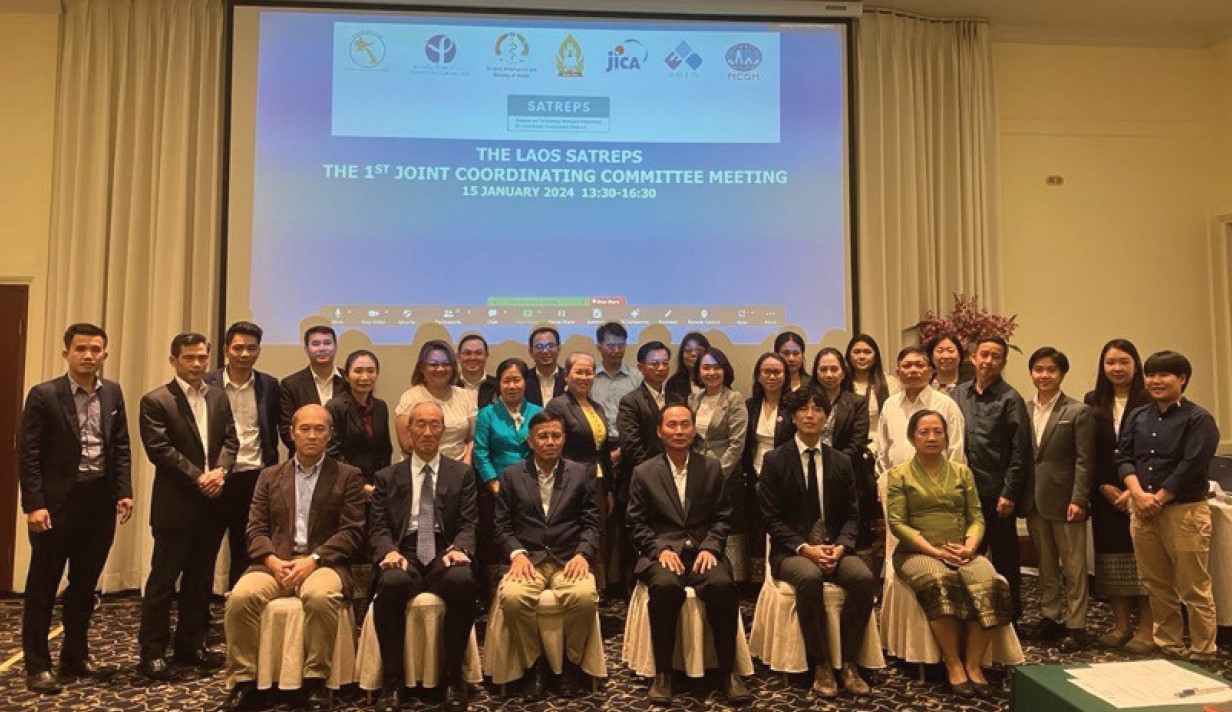
The first Joint Coordinating Committee Meeting of the SATREPS project in January 2024.
Collaborations
Lao PDR:
Center of Malariology, Parasitology and Entomology (CMPE), Department of Communicable Disease Control (DCDC), Lao Tropical and Public Health Institute (Lao TPHI), Faculty of Education of National University of Laos (NOUL), University of Health Sciences (UHS) and some other relevant departments and centers in Ministry of Health (MOH), Ministry of Education and Sports (MOES) and Ministry of Agriculture and Forestry (MAF).
Japan:
National Center for Global Health and Medicine (NCGM), Nippon Bunri University (NBU), Niigata University (NU), Niigata University of Pharmacy and Medical and Life Sciences (NUPMLS), University of the Ryukyus (UR), Shinshu University (SU), Nagano College of Nursing (NCN), and Kumamoto University (KU).
Funding
This study is financially supported by the Japan International Cooperation Agency (JICA) and the Japan Agency for Medical Research and Development (AMED).
Objectives
This project aims to accelerate malaria elimination, schistosomiasis (blood fluke) elimination, and opisthorchiasis (liver fluke) control by developing effective testing and infection prevention technologies, improving surveillance systems using communication technologies, and Ecohealth education. The higher goal of the project is to contribute to the achievement of Universal Health Coverage (UHC) and Sustainable Development Goals (SDGs) Goal 3, “Health and Wellbeing for All” in Lao PDR.
Background
Science and Technology Research Partnership for Sustainable Development (SATREPS) is a Japanese government program that promotes international joint research for global issues, such as infectious disease control, energy/environment issues, disaster risk reduction, and food security. Malaria is endemic in five southern provinces in Lao PDR, which means that 2.6 million people (35.3% of the population) are at risk of the infection. Morbidity and mortality of malaria have decreased in Lao PDR through the efforts of the Lao government with the support of partners. The Lao government adopted an ambitious goal to eliminate malaria by 2030. However, several obstacles, such as drug-resistant malaria, asymptomatic or low-density malaria infections, and poor access to healthcare services in remote, hard-to-access villages, are reported. Neglected Tropical Diseases (NTDs), mainly parasitic diseases such as schistosomiasis mekongi, foodborneparasitic diseases, and soil-transmitted helminthiasis, have been neglected in Lao PDR (according to the Lao National Policy and Strategies on NTDs Prevention and Control). These diseases have received less attention because they are chronic diseases and endemic only in low- and middle-income countries. However, the impact of such NTDs is devastating both from a public health and economic point of view for the affected people. The project’s objectives are to achieve malaria elimination and control neglected parasitic diseases (NPDs), such as schistosomiasis mekongi and opisthorchiasis in Lao PDR. By implementing this project, the number of malaria and NPD cases will be expected to decrease in Lao PDR. The project will contribute to achieving UHC and Goal 3 of the SDGs.
Methodology
Malaria study.
A highly sensitive DNA diagnosis using malaria LAMP technology will be installed at local healthcare facilities (i.e., district hospitals) as a point-of-care test and utilized to detect low-density malaria infections. District hospitals implementing the malaria LAMP testing will be selected based on malaria endemicity. The malaria LAMP testing enables the diagnosis of all malaria patients (“no one left behind”) who can benefit from appropriate treatment. In vitro, drug-susceptibility test at IPL will also monitor resistance to malaria drugs. Most malaria cases are reported from remote, hard-to-access villages where no mobile phone signal is available. In such areas, out-of-stock malaria commodities are often reported due to a delay in reporting and procurement. Thus, satellite mobile phones will be distributed to such healthcare facilities (i.e., health centers) to improve malaria surveillance.
Environmental DNA (eDNA) detection of Schistosoma mekongi and Opisthorchis viverrini by PCR and LAMP techniques will be developed to allow the creation of infection risk maps for infection prevention. A real-time PCR assay for detecting eDNA of the parasites on site (in the field) by using a portable real-time PCR machine will also be developed. Sites for the eDNA study were selected in schistosomiasis and opisthorchiasis endemic areas in Khong and Mounlapamok districts, Champasak province.
Pulsed-power technology for inactivation of Opisthorchis viverrini metacercariae.
To prevent O. viverrini infection, a novel pulsed-power technology that inactivates Opisthorchis viverrini metacercariae in freshwater fish will be developed and installed at a fresh market or selected village in Lao PDR. This technology was developed by Kumamoto University, Japan, and has already been utilized for a sea-fish parasite (anisakis) inactivation measure in Japan since 2021.
Special feed for the snail hosts to kill cercariae or suppress their growth.
For schistosomiasis mekongi and opisthorchiasis prevention, special feed containing spirulina to reduce the number of S. mekongi cercariae, and O. viverrini cercariae in snail hosts will be developed in Lao PDR. The efficacy of this food in reducing the number of S. mansoni cercariae has already been demonstrated in laboratory settings at the Tokyo Medical and Dental University (TMDU).
Capacity development for young Lao researchers.
Capacity development for young Lao researchers is one of the essential components of the SATREPS project. The project will provide an opportunity for training courses and studies at universities or research institutes in Japan, including Master’s and PhD courses. IPL Junior Scientist, Phoyphaylinh PRASAYASITH was selected for a Japanese government scholarship in 2023. She is currently a PhD student at Niigata University, Japan from April 2024 through March 2027. The SATREPS project also supports two other Lao researchers (Lao TPHI staff and National University of Lao staff, respectively) for PhD (April 2024-March 2027) and Master (October 2024-September 2026) courses at the University of Ryukyus, Okinawa, Japan.
Ecohealth education.
“Ecohealth education” is based on systems thinking applied to ecosystems. “Ecosystem-thinking” emphasizes an understanding of the whole ecosystem from multiple perspectives that consider mutually dependent relationships. Most malaria and NPD patients belong to ethnic minorities who live in remote, hard-to-access villages with poor hygiene conditions, which constitute risk factors for several infectious diseases. Therefore, Ecohealth education for residents of the endemic areas, including people from ethnic minorities, will be developed and conducted to improve their knowledge and capacity for malaria and NPDs prevention and health-seeking behavior.
Four villages were selected for this study in the Khong and Mounlapamok districts of Champasak province, where the annual praziquantel mass-drug administration (MDA) is implemented. Two villages will benefit from the intervention (Ecohealth education), and the other two will be control villages. The prevalence of parasitic infections among the villagers (students and parents) is currently being monitored. A Knowledge, Attitudes, and Practices (KAP) study prior to the intervention was also conducted to evaluate the effect of the intervention.
Results and discussion
Malaria study.
The prevalence of asymptomatic malaria infections was assessed in an endemic district. In February-March 2024, a cross-sectional study was conducted in three villages of Nong district, Savannakhet province.
This study was designed by Mr. Taofic Bouwe, a Master’s course student at the University of the Ryukyus, under the supervision of Dr. Daisuke Nonaka. In Nong districts, target drug administration (tDA) of antimalarial drugs was implemented in some villages. Our target villages were selected from those that did not implement the tDA. Villagers were invited to willingly join the survey. Blood samples were collected from the fingertips of the participants for Plasmodium parasite identification using Loop-mediated isothermal Amplification (LAMP). Those aged 13 years and above were also interviewed. Mann Whitney U-test and Fisher’s exact test were performed to compare the medians of different age and temperature groups and determine the association between predictor variables and outcome variables. 622 villagers participated in this survey; Plasmodium parasites were detected in 2.1% (13/622) of participants by Loopamp Malaria PAN detection kit (Eiken Chemical, Co. Ltd.). The prevalence of asymptomatic malaria was 1.8%. Plasmodium vivax accounted for 15.4% (2/13) of all positive cases by Loopamp Malaria Pv detection kit (Eiken Chemical, Co. Ltd.). The remaining species could not be identified by malaria species-specific PCR. The amount of DNA might be lower than the detection limit of the malaria PCR we used. Age was significantly associated with asymptomatic malaria infection, with 63.6% (7/11) of infections detected among adults (mostly farmers). 90% of the participants used Insecticide-treated bed nets in the village. However, 23.6% of forest trippers did not use Insecticide-treated bed nets in the forest. Mosquito control for workers in forests is important for malaria control. WHO recommends the tDA for malaria elimination. However, careful monitoring is needed to evaluate the efficacy of the tDA.

Environmental DNA (eDNA) approach for detecting DNA of Schistosoma mekongi, Opisthorchis viverrini, and their host snails.
The environmental DNA approach is a highly sensitive and straightforward approach to identifying the distribution of parasites and their host snails in environmental water, such as rivers, lakes, ponds, and paddy fields. To understand the dynamics of Opisthorchis viverrini in the environment at the community level, the survey team conducted four water sampling surveys during the dry (February and October) and wet seasons (May and August) in Khong and Mounlapamok districts, Champasak province, in 2024 (Fig. 1). DNA was extracted from the water samples using a commercially available kit, and real-time PCR was performed to detect the parasite DNA. By real-time PCR, O. viverrini DNA was detected in some villages in February and May, while no Schistosoma mekongi DNA was detected so far. The PCR for detecting S. mekongi DNA is currently being under-optimized. We anticipate the prevalence of S. mekongi to be quite low in the study sites.
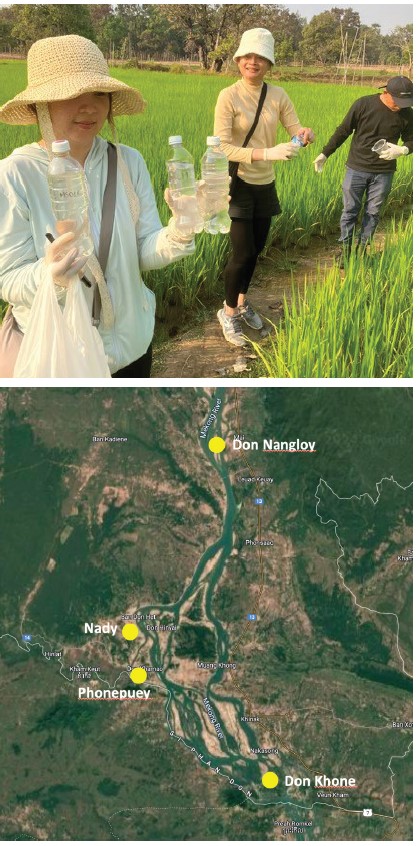
Figure 1. Study sites for eDNA detection and Ecohealth education study in the southern part of Champasak province.
Seven sentinel sites (villages) for National schistosomiasis monitoring were initially selected for eDNA surveys. However, four villages were re-selected as study sites to avoid duplication with other projects.
Study on special feed for host snails of Opisthorchis viverrini.
Special feed containing spirulina was fed to Bithynia spp., the host snail of O. viverrini in Laos and Thailand. The Bithynia spp. were collected in Kern village, Th oulakhom district, Vientiane province in July, and in Vientiane capital in September 2024. At first, a tablet type of spirulina feed was given to the snails that were then observed for 24 hours. It was unclear whether the snails ate them or not. During a second trial, several types of spirulina-containing feeds were prepared and given to the snails (Fig. 2). The snails were observed with a time-lapse camera for 24 hours. The snails seemed to have a preference for powder-type feed. Further study is needed to assess the preference for powder-type feed for the snails.
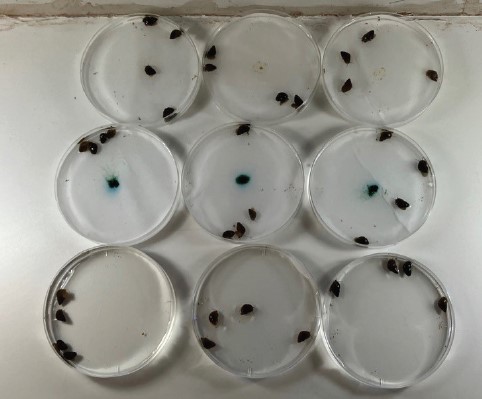
Figure 2. Spirulina feeding study for Bithynia spp.
Species identification of snails host for Opisthorchis viverrini.
It is recognized that the host snail of O. viverrini is Bithynia spp. However, the species was not fully identified in the southern part of Laos. To identify the species of Bithynia spp., a total of 246 Bithynia spp. individuals were collected in February, May, and August 2024 in Khong and Mounlapamok districts, Champasak province. Partial DNA sequences of coxI of the mitochondrial genome and 16S rRNA of the nuclear genome in the Bithynia spp. were sequenced. Phylogenetic analysis using the cox1 sequences showed that Bithynia spp. in the study sites was Bithynia siamensis goniomphalos lineage II and III (Fig 3). This is the first report on the identification of Bithynia spp. species in the southern part of Laos. Only one snail of lineage III was infected with O. viverrini in this study (0.4%). Although the susceptibility of different lineages of B. s. goniomphalos to O. viverrini is not yet known, investigating this association could be valuable in future studies.
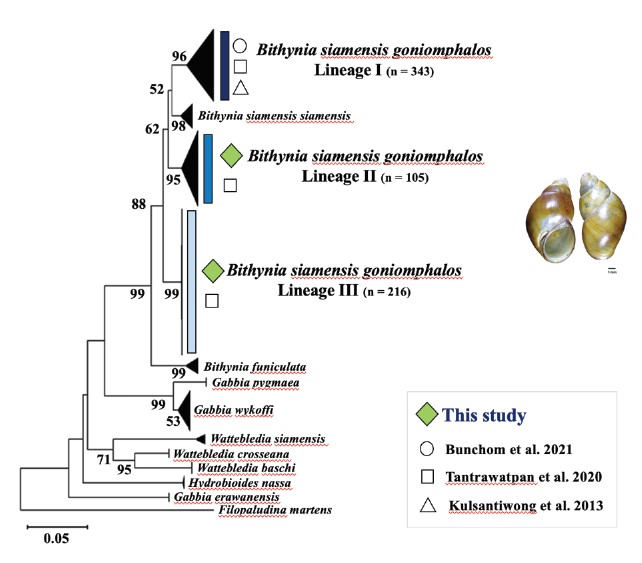
Figure 3. Neighbor-joining phylogenetic tree of Bithynia snails using cox1 DNA sequences.
Bithynia siamensis goniomphalos consisted of three lineages. Numbers on the nodes represent bootstrap values. Sequence data were obtained by the present study and the GenBank database.
Stool survey for schistosomiasis and opisthorchiasis among villagers in the endemic areas.
In September and October 2024, stool surveys for schistosomiasis and opisthorchiasis among villagers were conducted in Khong (Khone and Phonpeuy villages) and Mounlapamok (Nady and Hua Nangloy villages) districts, Champasak province (Table 1 and 2). This survey aims to identify the prevalence of schistosomiasis and opisthorchiasis among students (Primary students grades 4-5 and Secondary students grades 1-3) and their parents by copro-PCR and microscopic examination by the Kato-Katz method. The survey teams faced difficulty in collecting stool samples from the Secondary students in grades 1-3 since they were embarrassed and refused to provide stool samples. An additional stool survey was conducted for crucial village persons (village chiefs, village health volunteers, teachers, and health center staff) to implement the Ecohealth intervention. In Mounlapamok district, 41 people from village Nady and 21 from village Hua Nangloy participated in this survey. In Khong district, 54 people from village Khone and 24 from village Phonepuey participated in this survey. Those four villages are the target villages of Ecohealth education implementation and control. Stool samples are currently being analyzed at IPL.
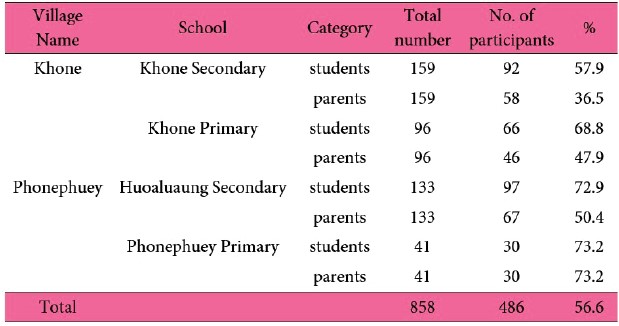
Table 2. Summary of stool samples in Mounlapamok district, Champasak province.
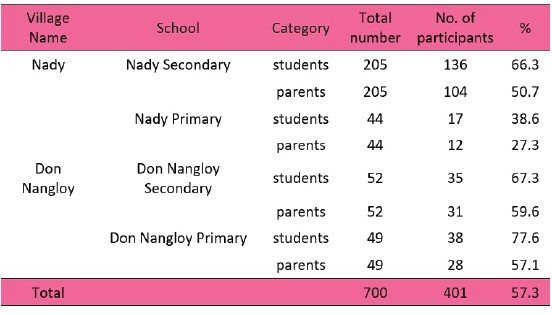
Table 1. Summary of stool samples in Khong district, Champasak province.
Ecohealth education study
Four cross-sectional surveys were conducted in February, August, September, and October 2024 as baseline surveys for implementing Ecohealth education for risk populations of opisthorchiasis and schistosomiasis mekongi in Champasak province. The survey team comprised the Faculty of Education, the National University of Laos, the Teacher Training College in Pakse, the local educational authorities, and the Japanese researchers. The Ecohealth team found that health education for schistosomiasis has been conducted in the Khong and Mounlapamok districts, Champasak province, for teachers and communities. In primary schools (n=88), 27.3% of the schools did not deliver the training content on schistosomiasis to the students, while in secondary schools (n=30), 36.7% of the schools did not deliver the training content on schistosomiasis to the students after the teachers/principals received the training for schistosomiasis control. Health education for opisthorchiasis has yet to be conducted or only slightly mentioned during the health education for schistosomiasis and during the annual mass drug administration (MDA) with praziquantel. The team also found that collaboration between the educational and health sectors needed improvement, and no health education evaluation was performed.
An opisthorchiasis KAP survey for villagers was also conducted. Some villagers heard of the name opisthorchiasis, but they did not know what opisthorchiasis is, and even they did not know that opisthorchiasis is a cause of bile duct cancer. Ecohealth education intervention will be implemented at the four target villages in 2025.
Conclusion & Perspectives
In 2024, we conducted several field surveys on malaria, schistosomiasis, and opisthorchiasis in the endemic areas in Laos. The malaria survey detected 2.1% of asymptomatic Plasmodium infections in Savannakhet province by the LAMP method. However, most of the parasite species were not identified by the Plasmodium species-specific PCR. In the eDNA survey for S. mekongi and O. viverrini in the southern part of Champasak province, O. viverrini DNA was detected by real-time PCR using the environmental water samples. On the other hand, S. mekongi DNA was not detected by the realtime PCR in the same samples. We will improve the PCR for detecting S. mekongi DNA. Species of Bithynia spp. was first identified by DNA sequences. The intermediate host snail of O. viverrini in the southern part of Laos was identified for the first time as Bithynia siamensis goniomphalos. Ecohealth education team found that health education for schistosomiasis and opisthorchiasis in the endemic areas needs improvement. In 2025, Ecohealth education intervention will be implemented in the target villages. Several pieces of training for DNA diagnosis were also conducted for researchers and local healthcare workers. In 2024, the malaria LAMP machines were installed at 12 district/provincial hospitals in five provinces and Lao TPHI to improve malaria diagnosis. In 2025, the LAMP machines will be installed at 14 district hospitals in five provinces.
Publications in 2024
Vongphayloth Khamsing and Moritoshi Iwagami, Lao People’s Democratic Republic, In Medical Entomology in Asia, Springer Nature Singapore Pte Ltd. 2024.
Congress
Oral presentations:
Iwagami M. Low Prevalence of Schistosoma mekongi infection among domestic Animals in Lao PDR. U.S.-Japan Cooperative Medical Sciences Program (USJCMSP), U.S -Japan Parasitic Diseases Joint Panel Meeting, Tokyo, Japan, 8 March 2024.
Khattignavong P, Soundala P, Lassachack P, Phommasansack M, Vanouvong V, Buchy P, Kano S, Iwagami M. Malaria outbreak in malaria free remote villages in Laos. The 93rd Annual Meeting of the Japanese Society of Parasitology, Tokyo, Japan, 9-10 March 2024.
Bouwe T, Nonaka D, Chayvangmanh V, Ahissou N. C. A, Nakayama A, Pongvongsa T, Khamlome B, Chindavongsa K, Banouvong V, Buchy P, Iwagami M. Proactive Case Detection of Asymptomatic Malaria Infections in Nong District, Savannakhet Province, Lao People’s Democratic Republic (Lao PDR). The 21st International Congress for Tropical Medicine and Malaria, Kuching, Sarawak, Malaysia, 19-23 September 2024.
Vilay P, Banouvong V, Khamlome B, Chindavongsa K, Buchy P, Kano S, Iwagami M. Accelerating malaria elimination with an application of LAMP methods in Laos: Introduction of JICA/AMED Laos SATREPS project 2023-2028. The 21st International Congress for Tropical Medicine and Malaria, Kuching, Sarawak, Malaysia, 19-23 September 2024.
Bouwe T, Nonaka D, Chayvangmanh V, Ahissou N C A, Nakayama A, Pongvongsa T, Khamlome B, Chindavongsa K, Banouvong V, Buchy P, Iwagami M. Prevalence of Asymptomatic Malaria Infections and Protection Measures Among Malaria-endemic Rural Communities of Nong District, Savannakhet Province. The 14th National Health Research Forum, Vientiane capital, Laos, 24-25 October 2024.
Bunchom N, Pakouakeu B, Hansana P, Soundala P, Bounavong V, Buchy P, Iwagami M. Genetic distribution of Bithynia siamensis goniomphalos, the first intermediate host for Opisthorchis viverrini, in Champasak province, southern Lao PDR. The 14th National Health Research Forum, Vientiane capital, Laos, 24-25 October 2024.
Prasayasith P, Valencia J. E, Revolteado M. J. V, Hansana P, Pakouakue B, MATSUO R, Matsumura N, Thanabousay C, Laymanivong S, Sayasone S, Banouvong V, Buchy P, Iwagami M, Sato M.O, Minamoto T, Sato M. Seasonality of Opisthorchis viverrini environmental DNA detection in endemic areas of Champasack, Lao PDR. The 14th National Health Research Forum, Vientiane capital, Laos, 24-25 October 2024.
Kanyasan K, Tomokawa S, Akiyama T, Thoumma S, Phedsouphanh S, Phommathat S, Davankham M, Thongasa B, Souvandouane A, Miyake K, Takeuchi R, Yamakawa M, Siphoummakangkooun M, Phommasone K, Phousaykham P, Khambaione S, Sansy B, Thepsmbath S, Soukhavong S, Iwagami M, Chounlamany K. Progression report and future implementation research plan on Ecohealth Education for schistosomiasis mekongi and opisthorchiasis in SATREPS project in Lao PDR. The 14th National Health Research Forum, Vientiane capital, Laos, 24-25 October 2024.
Akiyama T, Kanyasan K, Tomokawa S, Phommathat S, Phommasone K, Soukhavong S, Iwagami M, Chounlamany K. A preliminary report from the result of focus group interviews with mothers in Opisthorchis viverrini (liver fluke) endemic areas of Lao PDR. The 14th National Health Research Forum, Vientiane capital, Laos, 24-25 October 2024.
Phedsouphanh S, Tomokawa S, Kanyasan K, Thoumma S, Phommathat S, Davankham M, Thongasa B, Souvandouane A, Takeuchi R, Akiyama T, Miyake K, Yamakawa M, Siphoummakangkooun M, Phommasone K, Phousaykham P, Khambaione S, Sansy B Thepsmbath S, Soukhavong S, Iwagami M, Chounlamany K. Lesson learned from school-based preventive education on schistosomiasis mekongi in primary school in Champasak province, Lao PDR. The 14th National Health Research Forum, Vientiane capital, Laos, 24-25 October 2024.
Phommathat S, Tomokawa S, Kanyasan K, Akiyama T, Thoumma S, Phedsouphanh S, Miyake K, Yamakawa M, Iwagami M, Chounlamany K. Factors related to Confidence and Motivation in Preventive Education of Opisthorchiasis among Students in Pakse Teacher Training College in Laos. The 14th National Health Research Forum, Vientiane capital, Laos, 24-25 October 2024.
Iwagami M. Current situation and challenges for eliminating schistosomiasis mekongi in Lao PDR. The second meeting of JSPS Core to Core, Establishment of South-South and Triangular Cooperation for Elimination of Asian Zoonotic Schistosomiasis, Institut Pasteur du Laos, Vientiane capital, Laos, 29-31 October 2024.
Iwagami M, Outlines of the Laos SATREPS project. International collaborative research program under the scheme of ODA: Introduction of SATREPS projects and challenges, Symposia, Joint Congress on Global Health, Okinawa, Japan, 16-17 November 2024.
Chounlamany K. Tomokawa S, Kanyasan K, Akiyama T, Thoumma S, Phedsouphanh S, Phommathat S, Davankham M, Thongasa B, Souvandouane A, Miyake K, Takeuchi R, Yamakawa M, Siphoummakangkooun M, Phommasone K, Phousaykham P, Khambaione S, Sansy B, Thepsmbath S, Soukhavong S, Iwagami M. Progression report of research activities and future challenges on Ecohealth Education research for schistosomiasis mekongi and opisthorchiasis in SATREPS project in Lao PDR. International collaborative research program under the scheme of ODA: Introduction of SATREPS projects and challenges, Symposia, Joint Congress on Global Health, Okinawa, Japan, 16-17 November 2024.
Nonaka D, Kawamoto S, Iwagami M. Working with Lao experts for health research; challenges and opportunities of the Japanese academic sector. Joint Congress on Global Health, Okinawa, Japan, 16-17 November 2024.
Prasayasith P, Khattignavong P, Soundala P, Sannikone S, Phichitchay K, Matsumoto-Takahashi E.L.A, Iwagami M, Sato M, Sato M.O. Barriers in health education to ethnic minorities in Lao-PDR: A nutrition and helminth infection trial in Nong District. Joint Congress on Global Health, Okinawa, Japan, 16-17 November 2024.
Poster presentations.
Nouhak I, Nonaka D, Iwagami M. Enhancing Malaria Knowledge in Ethnic Minority People in Nong District, Savannakhet Province, Lao PDR: A cluster randomized controlled trial. The 14th National Health Research Forum, Vientiane capital, Laos, 24-25 October 2024.
Thongasa B, Tomokawa S, Kanyasan K, Thoumma S, Phommathat S, Phedsouphanh S, Davankham M, Souvandouane A, Takeuchi R, Akiyama T, Miyake K, Yamakawa M, Siphoummakangkooun M, Phommasone K, Phousaykham P, Khambaione S, Sansy B, Thepsmbath S, Soukhavong S, Iwagami M, Chounlamany K. Lesson learned from school-based preventive education on schistosomiasis mekongi in secondary school at Champasak province, Lao PDR. The 14th National Health Research Forum, Vientiane capital, Laos, 24-25 October 2024.
Bouwe T, Nonaka D, Iwagami M, Chayvangmanh V, Ahissou N.C.A, Nakayama A, Khamlome B, Pongvongsa T. Risk behavior and prevention measures among malaria-endemic rural community in Lao PDR. Joint Congress on Global Health, Okinawa, Japan, 16-17 November 2024.
Takahashi E.L.A, Kumagai T, Mizukami Y, Oyoshi K, Iwagami M, Kano S. Impact of forest area on malaria and precipitation on Schistosoma mekongi: Spatial epidemiological analysis using earth observation satellite data. Joint Congress on Global Health, Okinawa, Japan, 16-17 November 2024.
Teaching activities
Iwagami M, Field work for health research and cultural difference in a developing country: Case study in Laos, St. Luke’s International University, Tokyo, Japan, 5 June 2025 (Online lecture for Master Course students).
Training activities
Iwagami M, Field work for health research and cultural difference in a developing country: Case study in Laos, St. Luke’s International University, Tokyo, Japan, 5 June 2025 (Online lecture for Master Course students).
Training given by the team:
Malaria LAMP training for Lab staff of the Center of Malariology, Parasitology and Entomology (CMPE), Ministry of Health.
Trainers: Moritoshi Iwagami, Phonepadith Khattignavong, Pheovaly Soundala.
Trainees: Phinnakone Rathsachack, Manysack Phommasansack. (Jan 2024).
Malaria LAMP training for Lab staff of Provincial and District Hospital in Savannakhet province at Nong. District Hospital, Savannakhet province.
Trainers: Moritoshi Iwagami, Pheovaly Soundala.
Trainees: 2 Provincial and 4 District staff. (February and March 2024).
Malaria LAMP training for Lab staff of CMPE, and Lao Tropical and Public Health Institute (Lao TPHI), Ministry of Health, and University of the Ryukyus.
Trainers: Moritoshi Iwagami, Pheovaly Soundala, Palita Hansana.
Trainees: 2 CMPE, 3 Lao TPHI, 2 Students from the University of the Ryukyus. (March 2024).
Malaria DNA diagnosis training for Lab staff of CMPE, Lao Ministry of Defense, and Vietnamese Ministry of Defense.
Trainers: Marina Chavchich, Australian Defense Force, Malaria and Infectious Disease Institute, Phonepadith Khattignavong.
Trainees: 4 CMPE, 4 Vietnamese Military Institute of Hygiene and Preventive Medicine, 6 Lao Military
Institute of Hygiene and Preventive Medicine. (May-June 2024).
O. viverrini LAMP training for Lab staff of Center of Malariology, Parasitology and Entomology (CMPE), and Lao Tropical and Public Health Institute (Lao TPHI), Ministry of Health at IPL.
Trainers: Moritoshi Iwagami, Phonepadith Khattignavong, Pheovaly Soundala.
Trainees: 1 CMPE and 3 Lao TPHI staff. (July 2024).
Malaria LAMP training for Lab staff of Provincial and District Hospitals in Attapeu (5 district hospitals) and Champasak provinces (2 district hospitals).
Trainers: Phonepadith Khattignavong, Palita Hannsana, Pheovaly Soundala.
Trainees: 3 staff members in each hospital X 7 hospitals (July-August 2024).
Malaria PCR training for Lab staff of Center of Malariology, Parasitology and Entomology (CMPE), Ministry of Health.
Trainers: Moritoshi Iwagami, Phonepadith Khattignavong.
Trainee: Xiavue Tongwa, CMPE. (October 2024).
Malaria LAMP training for Lab staff of Provincial and District Hospitals in Luang Namtha (1 district hospital) and Bokeo (2 district hospitals) provinces.
Trainers: Phonepadith Khattignavong, Pheovaly Soundala.
Trainees: 3 staff members in each hospital X 3 hospitals. (November 2024).
IPL staff participated in the training as trainees.
Droplet digital PCR training at Bio-Rad Laboratories, Co. Ltd., Tokyo, Japan.
Trainer: Staff member of Bio-Rad Laboratories.
Trainees: Phonepadith Khattignavong, Moritoshi.
Malaria microscopist training.
Trainer: Staff member of CMPE.
Trainees: Pheovaly Soundala. (July 2024).
Drone operating training at IPL.
Trainer: Staff member of Actions Camera (Drone shop in Vientiane).
Trainees: Phonepadith Khattignavong, Palita Hannsana, Pheovaly Soundala, Moritoshi Iwagami.(October 2024).
Drone operating training at Khong district, Champasak province.
Trainer: Dr. Gaku Masuda, Tokyo Women’s Medical School, Tokyo, Japan.
Trainees: Palita Hannsana, Pheovaly Soundala, Phoyphaylinh Prasayasith, Phoutnalong Vilay, CMPE. (October 2024).







